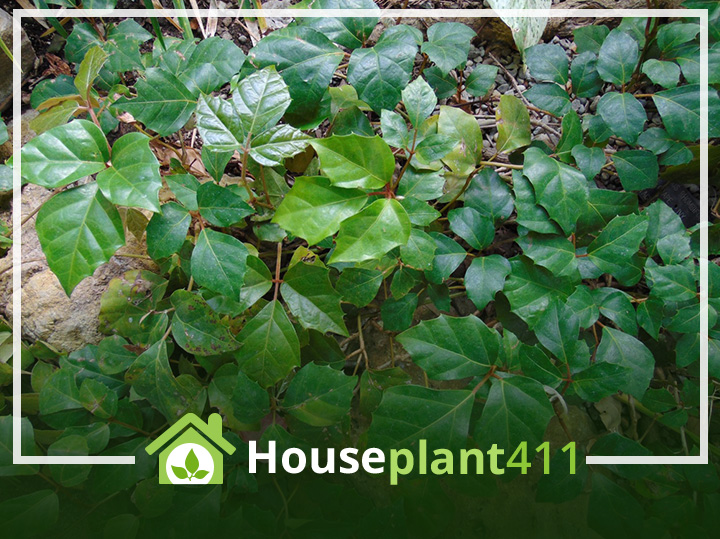A Grape Ivy plant, Cissus rhombifolia, (also called a Cissus alata) and its relative the Oak Leaf or Ellen Danica Ivy, has dark green, glossy leaves that grow off of long , thin stems. The plant is usually only about 18″ tall but can have trailing vines up to 10ft. in length. Grape Ivy plants look beautiful sitting on a table or hanging in a basket. The tendrils of a Grape Ivy plant or Oak Leaf Ivy plant help them cling to poles or pieces of bark. These plants may be a little difficult to locate because many greenhouses don’t want to spend the extra money and time it takes to grow them properly. They can be found at various online plant shops. The new Grape Ivy plant varieties are hardier and less prone to diseases and insects such as spider mites.
Plant Care
Light
Grape Ivy plants require medium to high light though new varieties such as Ellen Danica and Mandianna can live in lower light. If the stems stretch toward the light and new leaves are further apart on the stem, move your plant to a brighter location.
Water
Water well and then allow the top 50% of the soil to dry out before watering again. Crispy leaves mean the plant in over-watered.
Fertilizer
Fertilize every other month when a Grape Ivy is actively growing with a basic houseplant food diluted to 1/2 the recommended strength. A Grape Ivy should not be fed in the winter. Yellow leaves usually means the plant needs more food.
Temperature
Grape Ivy plants can handle temperatures from 40°-90°F (4.4°-32.2°C), although growth slows above 80°F ( 26.7°C). The ideal temperature for a Grape Ivy Plant is 60°-80°F ( 15.6°-26.7°C).
Humidity
Basic household humidity
Pests
Grape Ivies attract mealy bugs and spider mites.
Diseases
T prevent powdery mildew, provide good air circulation and keep the leaves dry.
Soil
Use a well-aerated soil that drains quickly. Grape Ivy Plants grow well in African Violet soil.
Pruning
Pinching back the stem tips keeps a Grape or Oak Ivy plant full and bushy.
Propagation
Propagate a Grape Ivy using stem cuttings. Be sure to let cut ends of the stems dry out a day or two before planting them. Grape Ivy plants should not be propagated during the hot summer months.
Poisonous Plant Info
A Grape Ivy is a non-poisonous houseplant.
FAQ
You’re describing an overwatering problem. Cut off all of the dead stems and damaged leaves. Do not water again until the soil has thoroughly dried out. Depending upon how badly you have damaged the roots, you may have to cut the entire plant back to the soil line.
The plant probably needs to be fertilized a little more often with a balanced houseplant plant food at ½ strength.
Try moving your plant to a brighter location and trim back the bare stems.
If your plant is not too large, submerge your entire grape ivy in a bucket or tub on mild soapy water and gently scrub it. Then use the green solution every 10 days for a month. If the Mealy Bugs still persist, you’ll have to purchase a chemical pesticide for treating Mealy Bugs.
It sounds like one side is in the direct sun and the leaves are being scorched. Move your plant so that it is never in the direct sun.

